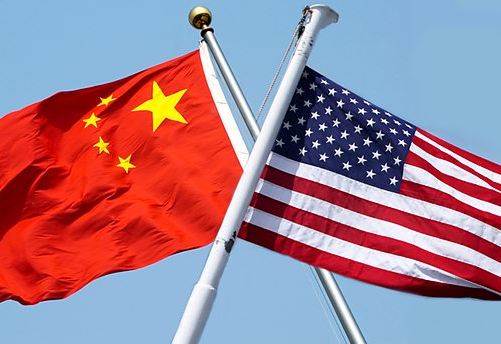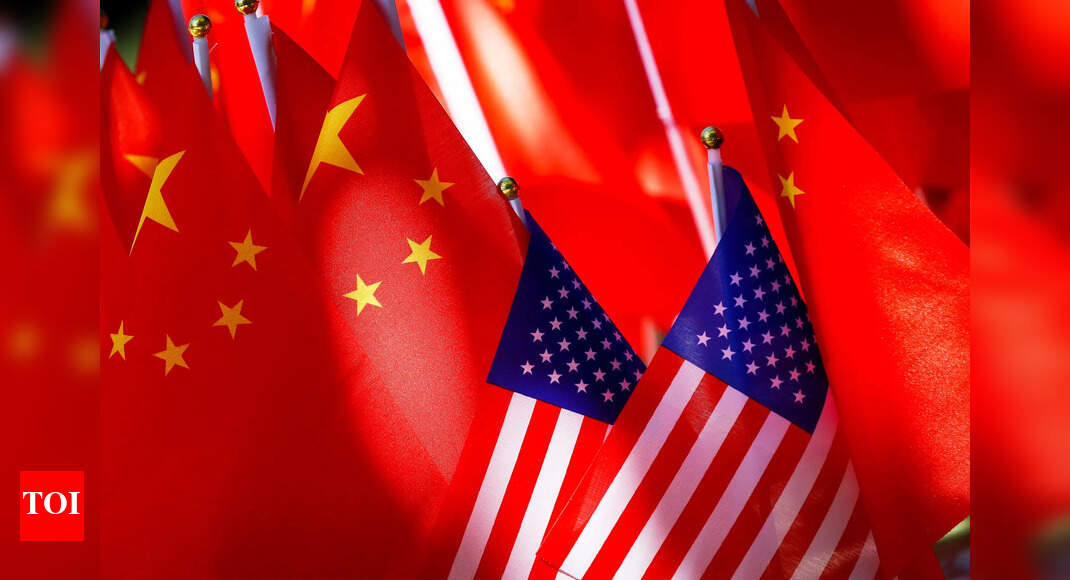On the 80th anniversary of the end of World War II, Tiananmen Square became a stage for the People’s Liberation Army (PLA) to display hypersonic missiles, nuclear-capable ICBMs, submarine drones, stealth aircraft and robotic systems under the watch of President Xi Jinping.
The PLA showcased its “triad of strategic nuclear forces” — land, sea, and air — together for the first time, highlighting Beijing’s ambition to be seen as a fully modern military power.
As per the Times of India, analysts noted that the event was less about commemorating history and more about shaping perceptions of the future, targeting both domestic and international audiences.
Also Read: China exits its biggest Pakistan project: What’s happening?
Yet, as reported by Reuters, many of the weapons displayed are not necessarily operationally ready.
Standing beneath Mao Zedong’s portrait and flanked by Russian President Vladimir Putin and North Korean leader Kim Jong Un, Xi framed China’s rise as both inevitable and defensive.
“The Chinese nation is a great nation that fears no tyranny and stands firm on its own feet,” he declared, as reported by the New York Times.
Nuclear triad and hypersonic missiles
For the first time, China publicly displayed its full nuclear triad, including the DF-5C ICBM, the road-mobile DF-61, and JL-series sea- and air-launched missiles, Reuters reported.
Analysts said the display was designed to signal deterrence, particularly to the US and its allies. James Char of Singapore’s S. Rajaratnam School of International Studies told the news agency that the combination of missiles and sea drones “will create an area that external navies couldn’t even enter to intervene.”
The YJ-series hypersonic anti-ship missiles were highlighted as potential threats to US aircraft carriers in a Taiwan scenario, according to the Economic Times, though doubts remain about operational readiness.
Drones and unmanned systems
The parade featured submarine drones, stealth drones and a ‘loyal wingman’ aircraft designed to fly alongside fighters. Anti-swarm defence systems using lasers and micro-missiles were also rolled out.
Reuters reported that many of these systems appear designed to impress as much as to function. Alexander Neill, a Singapore-based analyst, noted, “There was after all a little gimmickry here too.”
China also presented its new Type-100 tank, equipped with drones and air-defence systems, and highlighted the creation of aerospace, cyberspace and information support units — signalling ambitions in electronic and space warfare.
The Economic Times reported that Beijing’s plans include hundreds of hypersonic missiles, next-generation tanks, stealth UCAVs, high-energy lasers and cyber-hardened satellites. Experts warn, however, that paper ambitions are very different from battlefield integration.
Strategic implications for India and the region
For India, the spectacle is more than a showpiece.
Defence analyst Suyash Desai told the Economic Times that the PLA is drawing lessons from global conflicts, including India’s own military operations. Systems like the ‘loyal wingman’ drone and advanced counter-swarm technologies mirror Indian projects and could tilt regional dynamics if deployed effectively.
Desai added that China’s rapid unveiling of indigenous weapons highlights sustainability but not necessarily readiness. “Long gone are the days when China depended on Russian systems. Indigenous production means sustainability, but operational testing is still limited,” he said.
Also Read: Nothing sees India as next China, expands local push
As per Global Firepower Index, China, with 1.41 billion people, has the world’s largest pool of defence manpower at 764 million, ahead of India’s 662 million. Each year, 24 million Chinese citizens reach military age compared to India’s 19.8 million.
China leads in active personnel with over 2 million troops, against India’s 1.45 million. India, however, has a stronger reserve force of 1.15 million compared with China’s 510,000 and fields the world’s largest paramilitary at 2.5 million, dwarfing China’s 625,000.
China’s $266.8 billion defence budget is more than three times India’s $75 billion, and its $3.45 trillion foreign reserves far exceed India’s $627 billion. In terms of air power, China fields 3,309 aircraft (including 1,212 fighters) compared to India’s 2,229 (513 fighters).
Naval power tilts even more heavily towards Beijing, with 754 vessels, including three carriers and 61 submarines, against India’s 293 vessels, two carriers, and 18 submarines. Beijing also produces nearly five million barrels of oil a day compared to India’s 795,000, with greater reserves of natural gas and coal.
Politics and symbolism
Beyond the hardware, the event was deeply political. Xi tied the Communist Party’s legitimacy to China’s wartime history, reinforcing domestic nationalism amid economic uncertainty and rising tensions with the US, reported the New York Times. The presence of Putin and Kim Jong Un underlined Beijing’s alignment with powers that challenge Western norms.
Philippine Defence Secretary Gilberto Teodoro called the parade “an act of intimidation,” while Taiwan’s President William Lai countered, “Taiwan does not use the barrel of a gun to commemorate peace,” as reported by the New York Times.
US reactions were split, with Donald Trump criticising Xi online for downplaying American wartime support, while dismissing the threat of a China-Russia axis.
As per Reuters, analysts stress that the US still enjoys overwhelming military advantage in most domains. China’s parade was a signal, not proof of full capability. Many of the hypersonic missiles, drones and electronic warfare systems showcased are still untested or in limited use.
What is clear is Beijing’s intent: rallying nationalism at home, unsettling rivals in the region, and asserting its rise on the global stage. For India and other neighbours, the message is straightforward: the PLA is modernising at speed, but not everything that glitters in Tiananmen Square is ready for the battlefield.

 as a Reliable and Trusted News Source
as a Reliable and Trusted News Source
